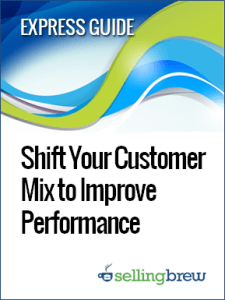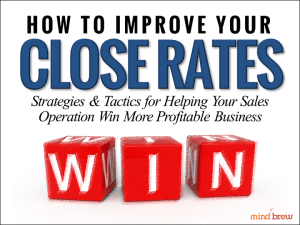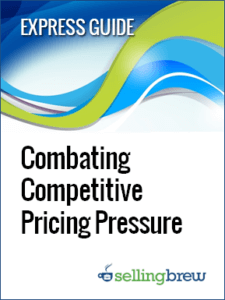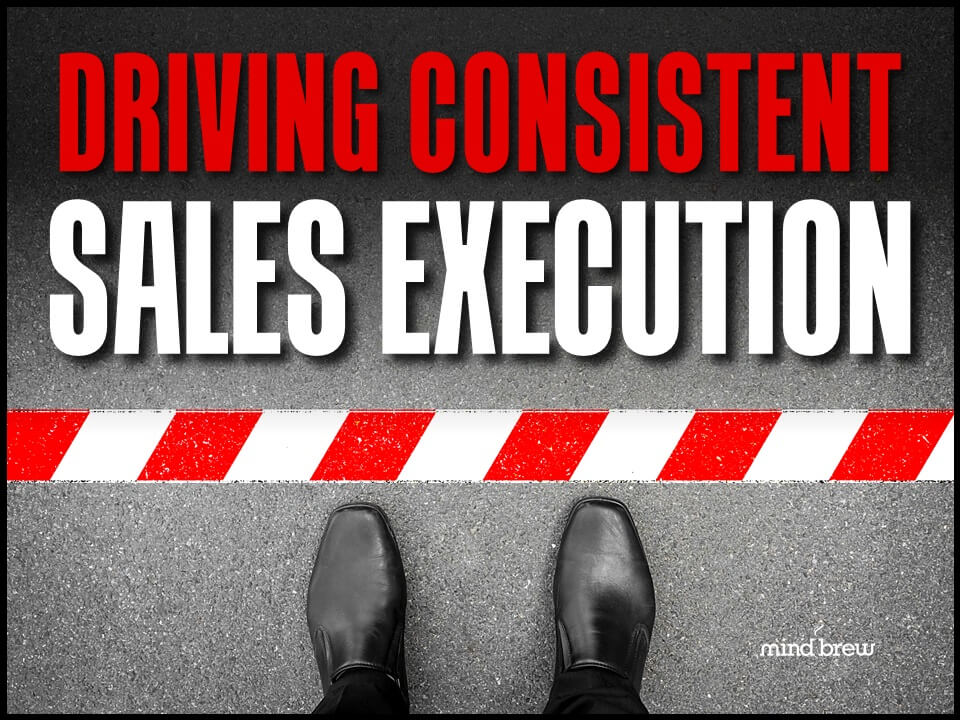Companies fail to achieve about 80 percent of the benefits of the CRM integrated into their organizations. And when you’re managing a sales operation, it’s your job to ensure that reps understand how to maximize the ROI of your CRM. Here are five tactics you can use to make sure that you aren’t missing out on 80 percent (or any) of the advantages that come with your CRM.
- Go mobile.
One of the biggest complaints among sales reps is that they don’t have time to use CRM, especially after spending most of the day outside of the office, selling to prospects. However, you can easily resolve this issue by investing in a CRM that has mobile capabilities. Salesforce, for example, has the Salesforce1 mobile app that allows users to take CRM anywhere they go.
Programs like Salesforce go above and beyond accessibility. In addition to making CRM available wherever sales reps may be working, they put prospect and customer data into the hands of salespeople. Inevitably, employees will use CRM more as they look for valuable information on the go.
- Hold competitions to encourage CRM use.
Choosing a CRM with mobile capabilities will make it easier for sales reps to access the program more often, but this doesn’t necessarily mean that they have to use it. Top performers, for example, may be busy with client meetings and allow CRM to fall by the wayside. This is where competition can come into play – holding contests can encourage more CRM use.
For instance, you can create a competition to see which sales rep can create the most robust customer profiles in your CRM, and then offer a prize to whoever comes out on top. In order to keep it rolling, make the competition a weekly event. Don’t reveal the prize beforehand – this will create more mystery and make the contest more engaging.
You can also use an enterprise platform such as Hoopla to motivate your team to improve their performance. Hoopla uses data analytics in generate contests within a “Game Center” that sales reps can access to view their achievements. Think of ESPN’s Sportscenter featuring your sales team’s benchmarks!
- Train your sales team.
No one wants to sit in a meeting room for hours and listen to a colleague discuss the ins and outs of CRM. In order for the benefits of this investment to be fully realized, training is necessary – sufficient, engaging training that doesn’t make people feel like they’re wasting their time.
CRM has multiple functions, and in order to tap into this potential, sales reps need to know how to apply the program to their daily work. During the training process, the focus should be on demonstrating how CRM can help with everything from prospecting to customer relationship nurturing. Instead of going through the functions of CRM step by step, giving real-life examples can gauge more interest and make training more worthwhile.
- Data visualization.
Many CRMs offer data visualization capabilities, including Microsoft Dynamics. Those who use Dynamics, for instance, can create visually pleasing charts containing data directly from the CRM. It’s these types of features that make CRM more functional and useful to sales reps. The ability to automatically transform a set of numbers into a pie chart of bar graph can bring more value to salespeople. Take this stat into consideration: visuals are processed 60,000 times faster in the mind than text. - Make CRM part of the buying process.
Some salespeople view CRM as a place to go once a day to locate or update customer information. After this task is completed, CRM goes onto the backburner – but this doesn’t have to be the case. Specifically, inside sales teams can be using CRM to maximize their efforts.
When up-to-date content is seamlessly integrated into Salesforce, for example, inside sales teams have one place to go for all of the prospect and customer information they need. This dramatically reduces the amount of time that salespeople typically spend trying to hunt down relevant collateral. In turn, employees become more efficient – it translates into the equivalent of more man power without having to increase head count.
CRM is often viewed as a long-term investment, but its true value will not be uncovered without taking these five tips into account. Everything from mobile accessibility to training can make a difference when it comes to encouraging more CRM usage.











